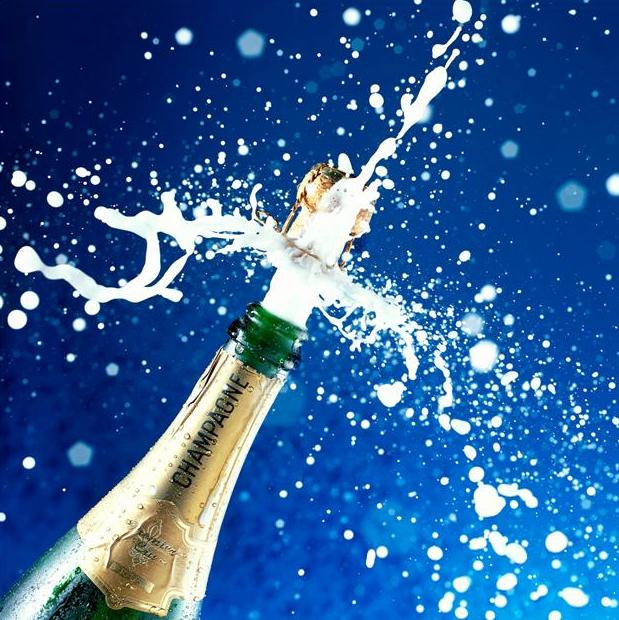When I was younger, I thought the beginning of a new calendar year was a stupid thing to celebrate.
It might have made sense if the new year actually coincided with some astronomical event like the winter solstice. The first day of spring, the true season of rebirth, would have been even better.
Instead the new year begins ten days after the winter solstice. Ten days after shortest day of the year. And ten days after the earth is at its farthest point from the sun.
It doesn’t get any more arbitrary than that.
Of course, now that I’m older, I don’t have as much of a problem with arbitrary celebrations. And as arbitrary celebrations go, New Year’s Eve is one of the best.
What’s more, as I’ve grown older, I’ve been able to partake of that greatest of celebratory beverages—champagne. And by champagne I mean any sparkling wine, it doesn’t have to be the French stuff.
My first drinking New Year’s was centered around a couple of splits of the Italian bubbly, Asti Spumonte. Subsequent events have featured various California champagnes and on the one Silvester (the German New Year’s) I spent in Berlin, we drank Sekt (the German version of champagne).
All sparkling wine is good. (Okay, maybe not cold duck.) This foamy wine is representative of the kind of effervescent evening New Year’s Eve is supposed to be. And since I’ve been married, I’ve learned just how sparkling that could be.
During the years my wife and I spent the last day of the year in Chicago, my in-laws hosted a costume party that saw us dressed alternately as Burt & Loni, Sonny & Cher, Michael Flatley and company, Larry King & Marlin Brando, Liza Minnelli and her husband, etc. etc. etc.
At each of these affairs, my father-in-law has blended a delicious champagne punch. He calls it the French 75—a drink that, according to some, originated at Harry’s Bar in Paris and was named for the punch it packed—like that of a French 75 mm cannon.
Now that my wife and I spend the post-Christmas holidays in California, we no longer attend this annual soiree. I’m pretty sure we haven’t been banned, although my brother-in-law says I brought the party to new levels of inebriation. Either way, I thought it would be fun to share some of that festive atmosphere with the rest of the world (or at least those who actually read this thing).
What better way than to transform the French 75 into a sorbet?
Think of it as my toast to all of you and my wish for an exciting and transformative new year ahead.
Cheers.
French 75 Sorbet
(about 1½ quarts)
Simple syrup
1 ½ cup water
1 ½ cup sugar
2 cups champagne or sparkling wine
1 cup cognac
½ cup lemon juice
¼ sugar
- Combine the water and sugar in a sauce pan, heat over medium heat until the sugar dissolves, then cool. This is your simple syrup.
- Combine the simple syrup with the champagne, cognac, lemon juice and sugar.
- Stir to dissolve the sugar then freeze the mixture in an ice cream freezer for about 35 minutes.
- Put the now frozen sorbet into your refrigerator/freezer for a couple of hours to give it a chance to firm up.
NOTE: When freezing ice cream, you need to use an ice cream freezer to ensure that a certain amount of air is mixed into the frozen cream. This gives it a lighter, less icy consistency. When freezing sorbet, you may also freeze it in a popsicle mold, a bowl or on a sheet pan. Be sure to stir the mixture occasionally to limit the size of the ice particles. Larger chunks of ice make for granita, miniscule chunks make for a nice smooth sorbet (an ice cream freezer is ideal).
Photo Credit: “Uncorked” from the good folks in Microsoft’s clip art division.
This is the second New Year’s for the Soup Blog and much has transpired since that initial posting back in 2009. I now have a full-time job and a burgeoning free-lance client base. I also have a growing family and new hope for the future despite the bleakness of the economy and the difficulty still facing so many of us. Best to you all.


